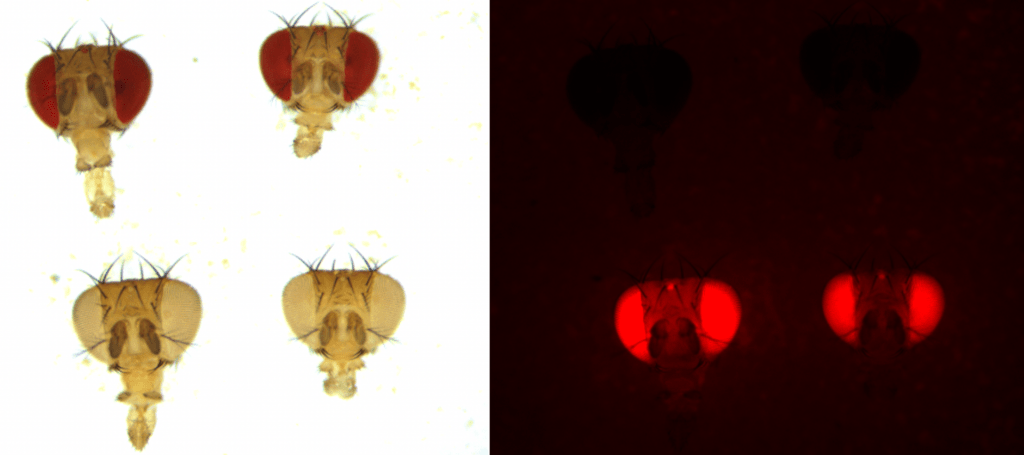The goal of the NSF-funded Neuronex consortium is to develop tools and protocols for in vivo imaging of neuronal activity in diverse non-model organisms. The Washington University Neuronex team (in conjunction with Gene Robinson’s group from The University of Illinois) is focusing on development of tools for social insect species; beginning with the well-studied Schistocerca americana (American grasshopper) and Apis mellifera (Honey Bee).
Our approach to achieve this goal is to adapt existing CRISPR/Cas9 insect techniques (primarily derived from the fruit fly Drosophila melanogaster) to work in these less molecularly developed species. In each case, the well-conserved white gene will be targeted to introduce the GCaMP7f transgene into the new species’ genome under the control of a neuron-specific promoter. Insertion of the transgene will be easily selected by the disruption of white, which will confer white eyes to the normally dark-eyed animals.
Once a stable transgenic line is established, the neuronal GCaMP7f will allow researchers to study defined neuronal populations during visual, tactile, olfactory and gustatory interactions; providing insights into the molecular cues that underlie complex social interactions in organisms with relatively few neurons.
